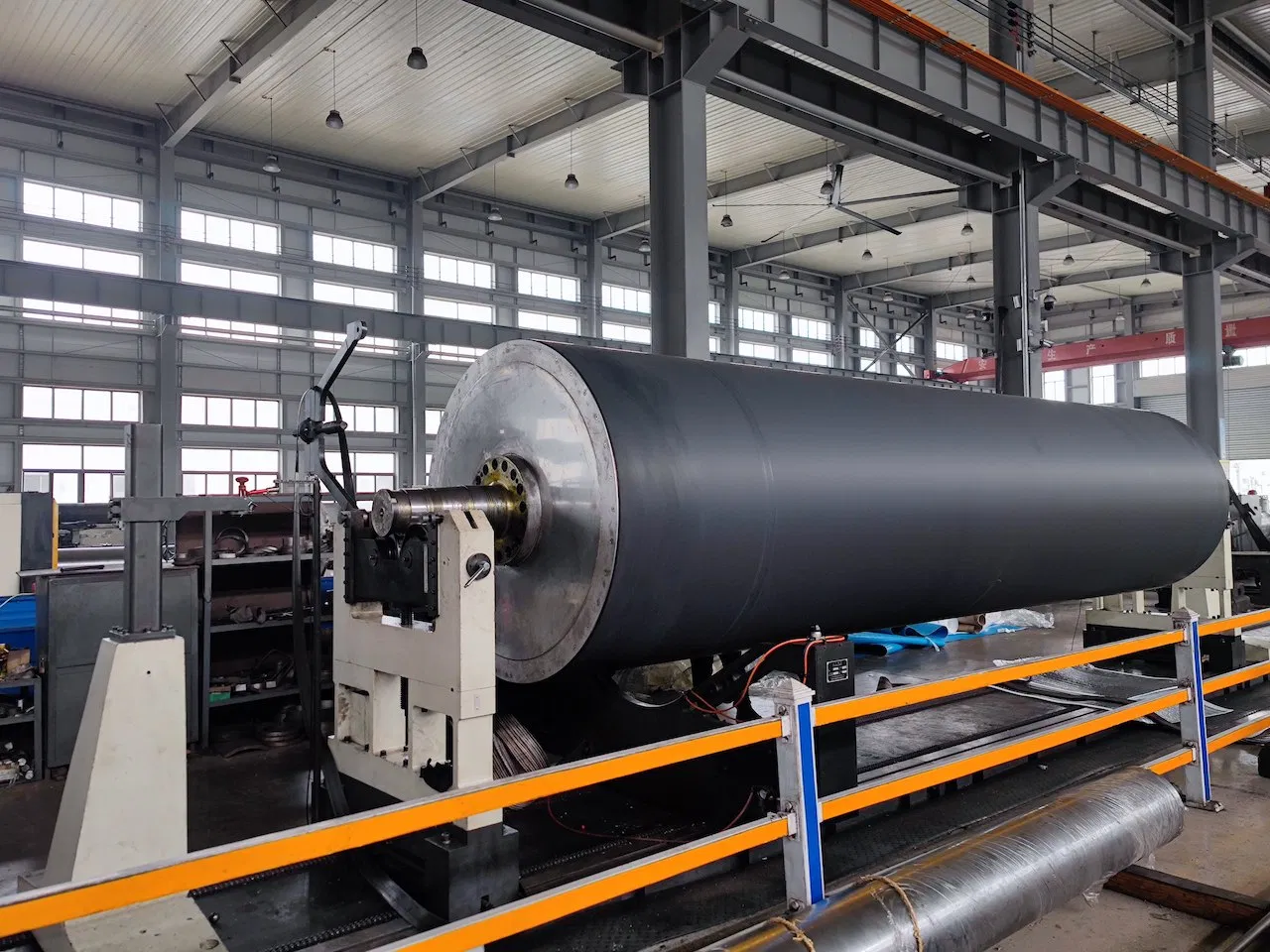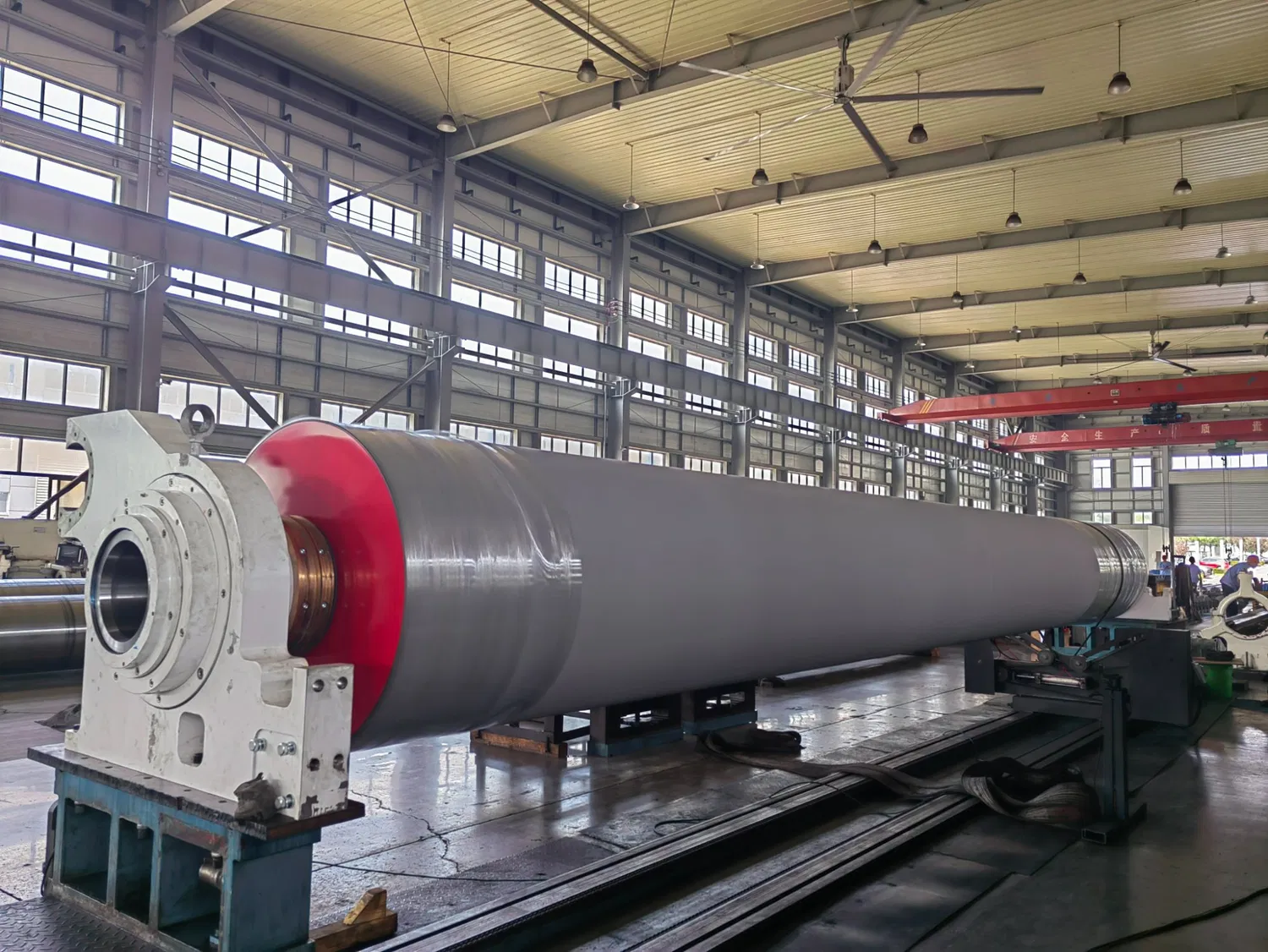In the intricate world of papermaking, where speed, precision, and quality are paramount, the humble paper machine roll plays a surprisingly central role. Frankly speaking, the efficiency and longevity of these components directly impact everything from production output to the final quality of the paper product. When paper machine roll performance dips, it's not just a minor inconvenience; it can lead to costly downtime, increased waste, and a significant hit to your bottom line. So, how do we ensure these workhorses are operating at their absolute best? This article delves into the multifaceted strategies for improving paper machine roll performance, offering insights that can make a real difference.
The Foundation: Understanding Your Paper Machine Rolls
Before we can talk about improving performance, it's essential to understand what we're dealing with. Paper machine rolls aren't just simple cylinders. They come in various types – press rolls, suction rolls, calender rolls, guide rolls, and more – each with a specific function and set of operational demands. The materials they're made from, their surface finishes, and their internal construction all contribute to their overall effectiveness. For instance, the rubber covering on a press roll needs to be precisely formulated to handle moisture, pressure, and the abrasive nature of the paper web. A calender roll, on the other hand, requires a highly polished surface to impart gloss and smoothness.
It's worth noting that the environment in which these rolls operate is also critical. High temperatures, humidity, chemical exposure, and constant mechanical stress all take their toll. Therefore, a proactive approach to understanding the unique challenges each roll faces on your specific machine is the first, and perhaps most crucial, step in improving paper machine roll performance.
Material Selection: The First Line of Defense
The choice of materials for roll coverings and even the core itself is a foundational element in achieving optimal performance. For press rolls, the selection of rubber compounds is a science in itself. Factors like hardness (durometer), elasticity, resistance to swelling, and abrasion resistance are all critical. A roll that swells due to moisture absorption will change its effective diameter, leading to uneven pressure and potential web breaks. Similarly, a covering that wears too quickly will necessitate frequent regrinding or replacement, impacting uptime.
In my experience, many mills overlook the subtle but significant impact of selecting the right cover for the specific grade of paper being produced. For example, a softer, more resilient cover might be ideal for tissue grades, while a harder, more durable cover might be necessary for kraft paper production. Similarly, for calender rolls, the choice between chilled iron, granite, or composite materials depends on the desired surface finish, operating temperature, and the type of paper.

When it comes to suction rolls, the design of the shell and the drilling pattern are also key performance indicators. The efficiency of water removal depends on the void volume and the pattern of holes, which must be precisely engineered to avoid creating localized pressure points or hindering vacuum effectiveness. Frankly speaking, selecting the right material and design upfront can prevent a cascade of problems down the line.
Optimizing Operational Parameters for Enhanced Performance
Beyond the physical attributes of the rolls themselves, how they are operated significantly influences their performance. This involves a delicate balance of pressure, speed, temperature, and cleaning routines. Adjusting these parameters can unlock hidden potential and prevent premature wear.
Pressure and Load Management
The pressure applied by rolls, especially in the press section, is a critical factor in water removal and sheet consolidation. Too little pressure, and you won't achieve the desired dryness or sheet strength. Too much, and you risk crushing the sheet, damaging the felt, or even deforming the roll itself. It's a constant balancing act.
I've found that implementing sophisticated load control systems, whether hydraulic or pneumatic, can make a huge difference. These systems allow for precise, real-time adjustments to roll loading, ensuring consistent pressure across the entire web width. Furthermore, understanding the relationship between nip loads and felt condition is vital. A worn or improperly conditioned felt can lead to uneven loading and accelerated roll wear. Have you ever considered how your felt maintenance directly impacts your rolls?
Temperature Control: A Double-Edged Sword
Temperature plays a crucial role, particularly in drying and calendering sections. Heated rolls in the dryer section, for example, need to maintain a consistent surface temperature to ensure efficient evaporation of water. However, excessive heat can lead to thermal expansion, potentially causing stress or even damage to the roll structure. Conversely, insufficient heat can slow down the drying process, impacting overall machine speed.
In calendering, controlled heat is used to plasticize the paper surface, improving gloss and smoothness. The precise temperature required depends on the paper grade, furnish, and desired finish. Overheating can lead to scorching or yellowing of the paper, while underheating will result in a poor-quality finish. Many experts agree that advanced temperature monitoring systems, coupled with precise heating and cooling mechanisms, are essential for maintaining optimal calender roll performance.

Speed and Web Tension Considerations
The speed at which the paper web travels through the machine and the tension maintained are also significant factors. High speeds can increase the mechanical stress on rolls, especially guide rolls and felt rolls. Maintaining appropriate web tension is crucial to prevent fluttering or sagging, which can lead to web breaks and increased wear on roll surfaces. Inconsistent tension can cause uneven loading on rolls, leading to localized wear patterns.
Optimizing these parameters often involves a deep understanding of the machine's dynamics and the specific characteristics of the paper being produced. It's not a one-size-fits-all approach. Data logging and analysis of machine speed, tension, and roll performance metrics can provide invaluable insights for fine-tuning these operational settings to achieve better paper machine roll performance.
The Art and Science of Roll Maintenance and Repair
Even with the best materials and operational practices, rolls will inevitably require maintenance and, at times, repair. Proactive maintenance is key to preventing minor issues from escalating into major problems, thereby improving paper machine roll performance over the long term.
Routine Inspections and Cleaning Protocols
Regular, thorough inspections are non-negotiable. This includes checking for surface imperfections like nicks, gouges, or signs of wear. The frequency of these inspections should be dictated by the roll's function, operating conditions, and historical performance data. For instance, press rolls might require more frequent checks due to the high pressures and moisture they encounter.
Cleaning protocols are equally important. Buildup of pitch, fillers, or other contaminants on roll surfaces can affect paper quality, increase friction, and lead to uneven wear. The type of cleaning agent and method used must be appropriate for the roll material and the contaminants being removed. In my experience, a well-defined and consistently followed cleaning schedule is one of the most cost-effective ways to extend roll life and maintain peak performance.

Regrinding and Refurbishment: Restoring Performance
When wear or damage occurs, regrinding is often the solution to restore a smooth, uniform surface. This process requires specialized equipment and expertise to ensure that the roll's geometry and surface finish are restored to their original specifications. The depth of regrind is critical; removing too much material can compromise the roll's structural integrity or its covering thickness, while too little may not effectively address the issue.
For more significant damage or wear beyond regrinding capabilities, refurbishment or even replacement might be necessary. This could involve stripping and recovering a roll, or in cases of core damage, manufacturing a completely new roll. Investing in quality refurbishment services can be a smart move, extending the life of expensive components and avoiding the cost and lead time of new roll procurement. Frankly speaking, timely and expert repair is crucial for sustained paper machine roll performance.
Preventive vs. Predictive Maintenance
Traditionally, maintenance has been either reactive (fixing things when they break) or preventive (scheduled maintenance regardless of condition). However, the industry is increasingly moving towards predictive maintenance. This involves using sensors and data analytics to monitor the condition of rolls in real-time and predict when maintenance will be needed. Techniques like vibration analysis, thermal imaging, and surface profilometry can detect early signs of wear or imbalance, allowing for maintenance to be scheduled precisely when it's most beneficial, minimizing downtime and maximizing performance.
This shift from scheduled maintenance to condition-based interventions is a game-changer for improving paper machine roll performance. It ensures that resources are used efficiently and that potential issues are addressed before they impact production. Many experts agree that embracing predictive maintenance strategies is the future of efficient mill operations.
Advanced Technologies and Future Trends
The pursuit of better paper machine roll performance is an ongoing journey, fueled by technological advancements. Innovations in materials, sensor technology, and data analytics are constantly pushing the boundaries of what's possible.
Smart Rolls and IoT Integration
The concept of "smart rolls" is gaining traction. These are rolls equipped with embedded sensors that continuously monitor critical parameters such as temperature, pressure, vibration, and even surface wear. This data can be transmitted wirelessly to a central system, providing operators with real-time insights into the health and performance of each roll. This level of detailed, continuous monitoring is invaluable for proactive management and fine-tuning operations.
The integration of these smart rolls with the Industrial Internet of Things (IIoT) allows for sophisticated data analysis, machine learning, and AI-driven diagnostics. This can lead to highly accurate predictions of component failure, optimized operational settings, and ultimately, a significant boost in overall paper machine roll performance. It's fascinating to see how far we've come from simple mechanical rolls.
New Materials and Surface Treatments
Research and development continue to yield new materials and surface treatments designed to enhance roll durability, reduce friction, and improve resistance to wear and corrosion. Advanced composites, specialized coatings, and novel rubber formulations are all contributing to longer roll life and improved operational efficiency. For example, ceramic coatings can offer exceptional hardness and wear resistance for certain applications, while advanced polymer blends can provide enhanced chemical resistance for rolls operating in aggressive environments.
The development of self-healing materials or coatings that can repair minor surface damage autonomously is also an area of active research. While still in its early stages for paper machine applications, such innovations hold immense promise for the future of roll maintenance and performance improvement. Frankly speaking, the continuous innovation in materials science is a key driver for enhancing paper machine roll performance.
Conclusion: A Holistic Approach to Peak Performance
Improving paper machine roll performance isn't a single fix; it's a holistic endeavor that requires attention to detail across multiple fronts. From the initial selection of appropriate materials and designs to the meticulous fine-tuning of operational parameters and the implementation of robust maintenance strategies, every aspect plays a vital role. Embracing advanced technologies and staying abreast of industry trends will further empower mills to achieve and sustain peak performance.
Ultimately, investing in the health and efficiency of your paper machine rolls is an investment in the overall success of your papermaking operation. By adopting a proactive, data-driven, and continuously improving approach, you can ensure that your rolls are not just components, but powerful contributors to your mill's productivity, quality, and profitability. Mastering the roll is indeed mastering a crucial aspect of modern papermaking.
For more detailed information, please visit our official website:paper machine roll performance
About the author: A seasoned paper manufacturing consultant with over 15 years of hands-on experience, Alex Chen specializes in optimizing paper machine operations. His expertise spans roll maintenance, material science, and process efficiency, helping mills worldwide achieve peak performance and reduce operational costs. Alex is passionate about sharing practical insights to drive innovation in the paper industry.


